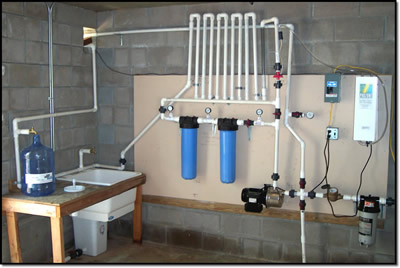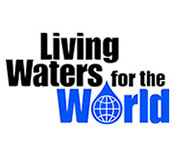|
Untitled Document
|
| |
Living Waters for the World Facts at a Glance
(revised
2016)
|
|
| |
Living Waters for the World (LWW) is a Christian ministry that provides sustainable clean water, fostering long-term, mutually beneficial relationships between volunteers and communities in need.
LWW partners with communities to develop a sustainable solution for providing clean water. By providing a water treatment system that’s simple and affordable, and by teaching local leaders to lead health and spiritual education among the community, Living Waters for the World and its trained volunteer teams help communities take ownership of their health and well-being.
NOTE: LWW does not drill wells or provide other water access solutions. LWW empowers communities to treat available but contaminated water.
Installation Locations:
Churches, schools, orphanages, health clinics, community centers, hospitals
in areas with available but contaminated water
Transfer of Knowledge/Information:
Train and equip volunteer mission teams via Clean Water U (a five-day simulation school), with support
from LWW's Fulfillment Center through which system/educational materials are
available
The LWW Mission Development Approach:
Train the trainer:
Every effort is made to ensure that operating partners (local,
in-country partners responsible for the sustainability of the program) construct the clean water system on site and lead ongoing health,
hygiene & spiritual
education, and that initiating partners (typically U.S.-based
partners)
teach, coach
and ultimately empower operating partners.
System sustainability via international networks:
Living Waters for the World is committed to the highest possible sustainability of clean water systems. Therefore, LWW initiating partners are required to work within one of LWW's eleven international networks.
When Living Waters for the World began training water teams in 2004, our emphasis was on the installation of water systems. The ribbon-cutting ceremony during a water system installation celebration was like breaking the tape at the end of a 5K race. What we have learned in the years since is that the installation of a water system is like the beginning of a marathon, with initiating partners and operating partners working together with support from LWW networks to ensure clean water flows for a generation.
Time and Cost Commtments:
A covenant relationship for a minimum of three years is established between an initiating partner (trained team) and an operating partner, involving four or more
trips to the operating partner's location.
Our initiating partners are responsbile for their own expenses - many raise funds for this effort as part of their mission programs. We estimate the total cost of a mission team's participation over a three-year span to be about $24,500, which includes costs of training, system materials and travel expenses.
Health, Hygiene and Spiritual Education:
Curriculum structure: modular format - trainers pick from a menu of choices those
that best
meet their particular educational requirements
Clean Water Systems:
A modular approach for these community-sized systems provides a configurable
solution to meet the
specific needs of a partner.
The Standard system is described below; details
covering two systems for
removing calcium, magnesium, fresh-water salinity and heavy metals are available
on request.
Standard Clean Water System
Purpose: bacteriological disinfection; removal of chlorine-resistant organisms
Design: batch treatment process, with an integrated bottling station
Capacity: based on tank size; typically a 300-gallon tank
Process time: 300 gallons per hour at 5 gpm per batch
Key Methods: filtration, microfiltration and either ultraviolet light or ozone disinfection
Installation Cost: hardware - $3500; additional costs, i.e., tank stand or building materials, may occur in some cases
Operational costs, incl. replacement parts (excluding labor): per 100,000 gallons:
one-half cent to
one cent per gallon
Parts Availability: key system components provided
at cost, plus shipping & handling,
through LWW's
Fulfillment Center in Louisville, KY (accessed via LWW web site); replacement part supply chains are being established in each of our international networks (see mission opportunities section of web site for a list of networks)
|
|
| |
Standard Water Treatment System
with Bottling Station

Purpose: bacteriological disinfection; removal of chlorine-resistant organisms
Components: filtration, micro-filtration and ozone
The Living Waters for the World (LWW) Standard Clean Water System takes available, but contaminated water, and processes it through filtration, micro-filtration, and ozone or ultra-violet (UV) disinfection to produce water that is safe to drink.
The filtration step uses a 50 micron sediment filter to remove sediments and solids in the water. This filtration process is followed by filtering the water through a 5.0 micron and 0.5 micron filters to remove pathogens. The final part of the process includes disinfection with ozone or UV light to remove bacteria, viruses, and other water-borne pathogens too small for the 0.5 micron filter.
This process is run in batch mode to produce clean water that can be bottled for distribution or used from a clean water storage tank. Because there is limited to no residual disinfection with ozone or UV treatment, LWW recommends that if the water is to be stored in a tank for more than a day or distributed from the tank to other locations that it be chlorinated to provide another layer of protection.
This process is limited to the removal of water-borne pathogens. Heavy metals, salt, hardness, and other chemical contaminants may be addressed using a variation of the Standard Clean Water System using Reverse Osmosis and Softening (ROS).
|
|
|
|
|





